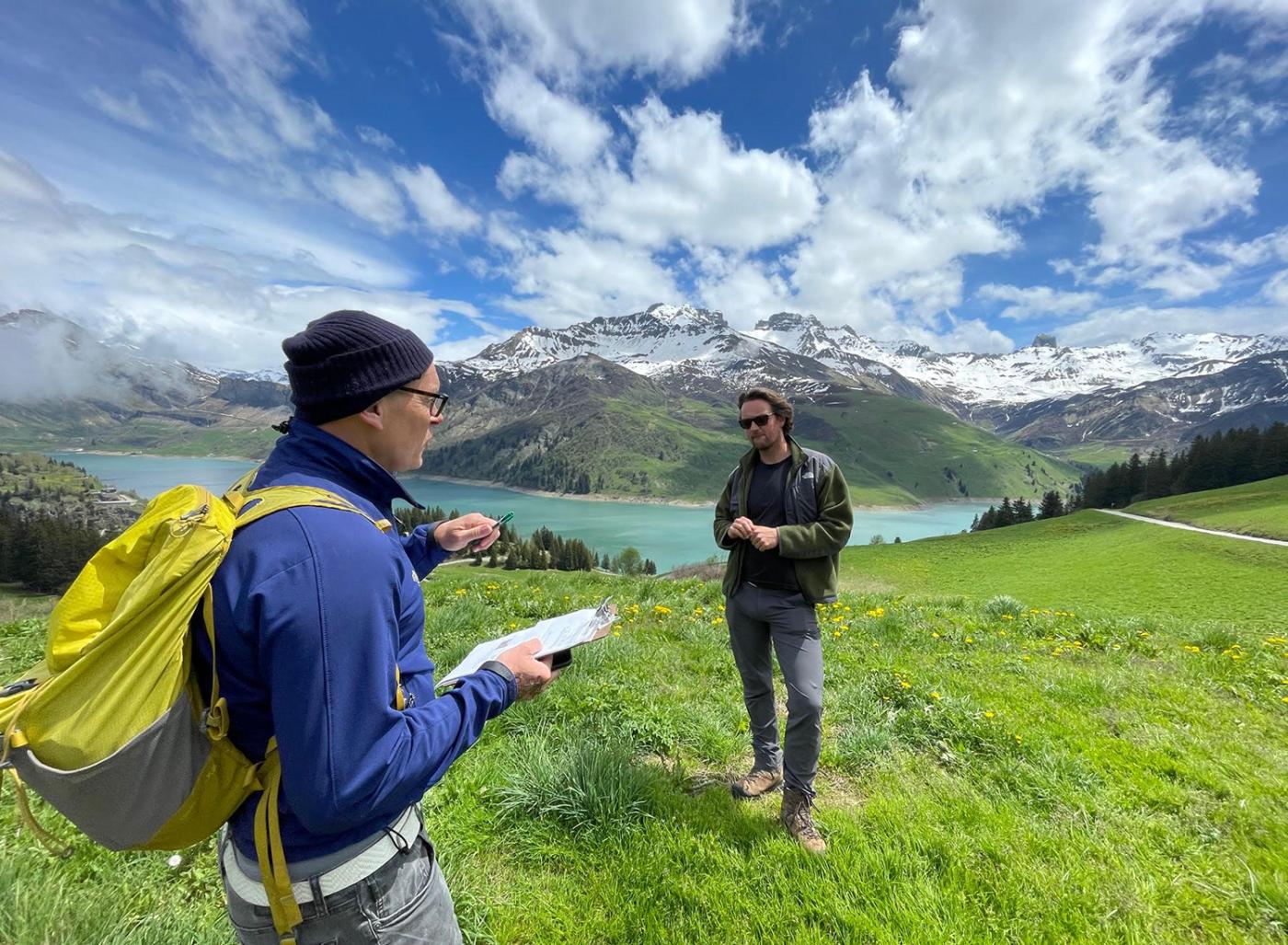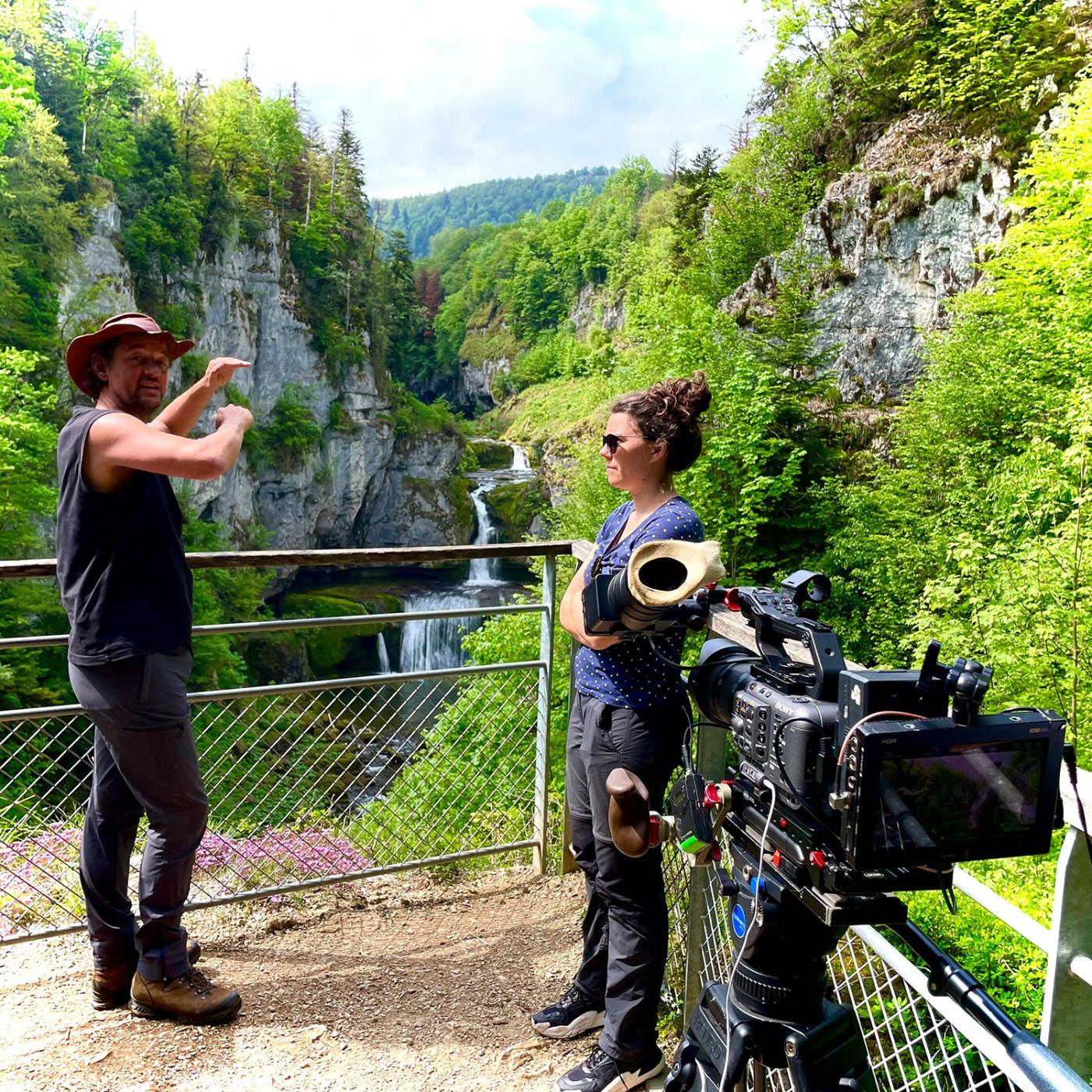Volcanoes, fossils, and castles made of meteorite
Professor Van Hinsbergen explains the geological highlights of Tour de France

The first stage of Tour de France started last Saturday in the narrow alleys of Florence, Italy. The peloton is cycling east, through the Apennines. On route towards harbour city Rimini, the cyclists passed through medieval villages, nestled inside a rolling mountainscape. But why is this route through the heart of Italy so steep? And why do Roman buildings look like someone’s beaten them up?
For four years, Douwe van Hinsbergen, Professor of Global Tectonics and Palaeography, has been answering these and other questions on TV. Almost without realising it, TV viewers are looking at hundreds of millions of years of geological history, says the professor, himself a cycling fan. That’s how he came up with the idea of writing a blog and making videos to explain the Tour’s geology. His videos are now being used by NOS and the English channel ITV.
For the 2024 Tour, he and his team made a new series of videos that starts in Italy, passes through the French Alps, proceeds through the heart of France and the Pyrenees and ends up in Nice. Due to the Olympics, this year’s Tour will not end in Paris. The two-minute videos can be seen during live reports about the competition as well as NOS' talk show De Avondetappe (“The Evening Stage”). In them, Van Hinsbergen takes viewers along on an excursion to a geological phenomenon the cyclists are passing through at the moment. Videos can explain anything from the effect of earthquakes on Roman construction to changes in sea level.

Dinosaurs and meteorites
"I’ve loved cycling for as long as I can remember. When I started studying Geology thirty years ago, I already saw a link between cycling and geology.” The idea of explaining geology during a cycling competition started as a "joke" during Covid. Cycling stages typically take around five hours, of which the first one and the last half hour are the most eventful. The rest is filled with calm commentary about local wines or the history of nearby villages. “I thought: ‘We could just as well talk about the remarkable geology of the surroundings.’”
The professor then wrote a few blog posts and sent them to the TV show Studio Sport, which then featured them. He then built a website to go along with the blog and started commenting on races on social media under the handle GeoTdF. “The Twitter account was an instant success,” he says. Last year, he started making knowledge clips together with his colleague Marjolein Naudé and a professional film team. They travelled through Europe to shoot videos explaining the geological context of the various stages of Tour de France, Tour de France Femmes, and the spring classics.
One of his blog posts highlights how the area around Garonne, a river in south-west France, was still sea 25 million years ago. The fossil-rich gravel that was left over after the sea dried up contains a lot of chalk, making it the ideal substrate for vineyards. In one of the videos, Van Hinsbergen is dressed in a typical black tank top and a cowboy hat, talking about how the remains of a one-kilometre-wide meteorite were dug up in Rochechouart, France. The materials ended up in the village’s castle walls. Drone images show a huge hole – the source of the otherworldly wall stones. For the Amstel Gold Race, set in the hills of Limburg, he made a video talking about the gigantic dinosaur fossils found there and, for the Dakar Rally, he discussed the origins of sandy rock formations in the Arabic peninsula.
Van Hinsbergen sees the blog and the videos as part of his educational role. Still, he and his international team, comprised of dozens of scientists, mostly work on the project after working hours. Thanks to financing from the Dutch Research Agenda and other sponsors, they have managed to hire a few media experts such as cycling journalist José Been. However, the blog writers all work on the project voluntarily. The team has launched a crowdfunding campaign to be able to continue making these geological reports in the future.

Geologically illiterate
Van Hinsbergen says that the enthusiastic responses he gets from viewers are one of the main reasons he's motivated to continue the project. “In academia, you first have to do lengthy research, then go through a long peer review process before an article is published, and it often takes even longer before you know whether other researchers think it’s interesting.” Educating people about the geology behind Tour de France provides him with a form of instant gratification. “Thanks to social media and the TV shows, I know right away that viewers like hearing about this sort of thing.”
Aside from sharing interesting knowledge with a broader audience, Van Hinsbergen uses Geo Sports to educate the public about geological systems – a necessary endeavour, in his view. “We gather materials from the earth and then buy them at the hardware store. But we don’t know where the hardware store got them from. Geologically speaking, most Dutch people are illiterate, because schools here don’t teach much about it.” Whereas in other countries how mountains come to be, how late tectonics move and how rocks are formed constitute general knowledge, people are pretty much unaware of that in the Netherlands. "We’re changing our society rapidly. In the transition towards a sustainable society, people must understand where materials and energy come from, which processes are at the foundation of that, and how earth's systems work.”
The geologist hopes to strengthen people’s basic knowledge and ensure that people are better informed when making choices, political or otherwise. However, he doesn't define himself as an activist. “I explain how geological processes work. These are issues of Physics and Chemistry, without any political colour or opinion, and what the viewers do with that knowledge is up to them.”
Sometimes, he’s on a tightrope, though. Last year, for example, he received a lot of hate mail after a video about glaciers. “You can’t talk about the glaciers in the Alps without saying they’re not doing very well,” he recollects. "If you take the viewer along on an excursion, you shouldn’t leave them feeling depressed. That's what I've learned from this. We don’t avoid any topics, but we want the viewer to go back to Tour de France with the same positive vibe as before.”